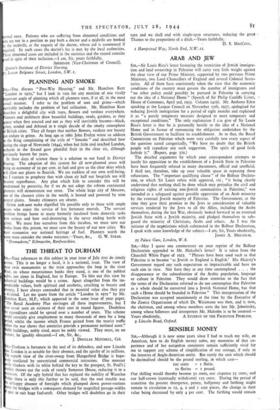MATERNAL MORTALITY
Sia,—The urgen't need to safeguard the lives and to promote the w being of the mothers of our country is constantly before the authon responsible for their care. In war-time the problem of providing an a quate midwifery service is a mot difficult one, and the majority of wives are working very long hours. The district nurse-midwife who ma undertakes this work in rural areas is a very impOrtant "cog" in wheel of the health services. In addition to her heavy professi responsibilities she has to contend with long distances, often in the d ness of winter in snow and in fog, and sometimes walking through mud, fields where no car or bicycle can be used. The work has often to carried out in homes where facilities are negligible and where the 111- wife's resourcefulness and forethought are taxed to the greatest extent. The Queen's Institute of District Nursing's report on its midwl work in 1943 records success of which each of the 4,201 midwives may justly proud. The maternal mortality amounted to 1.35 per r,000 births, the second lowest on record, the number of patients atten totalling 84,459. All midwives' cases are not, as is generally
thou
rmal ones. Patients who are suffering from abnormal conditions and he are not in a position to pay both a doctor and a midwife are booked y the midwife, at the request of the doctor, whose aid is summoned if quired. In such cases the doctor's fee is met by the local authorities. ese abnormal cases are included in the statistics and the record remains in spite of their inclusion.—I am, Sir, yours faithfully,
7, Lower Belgrave Street, London, S.W. z.



























 Previous page
Previous page